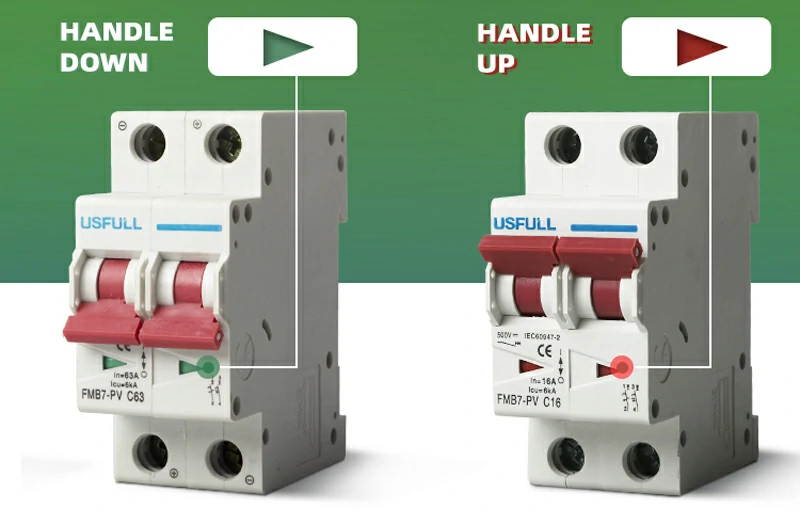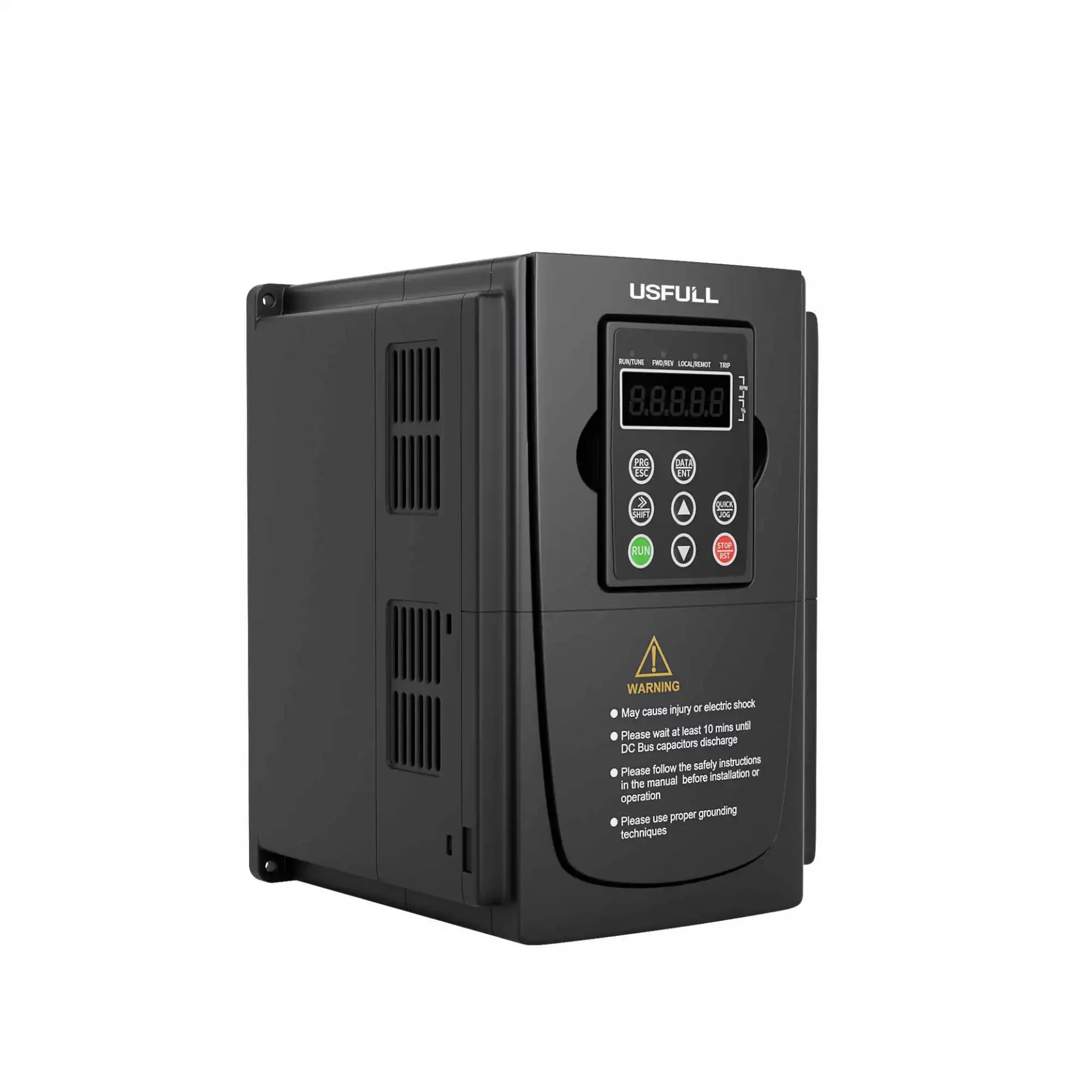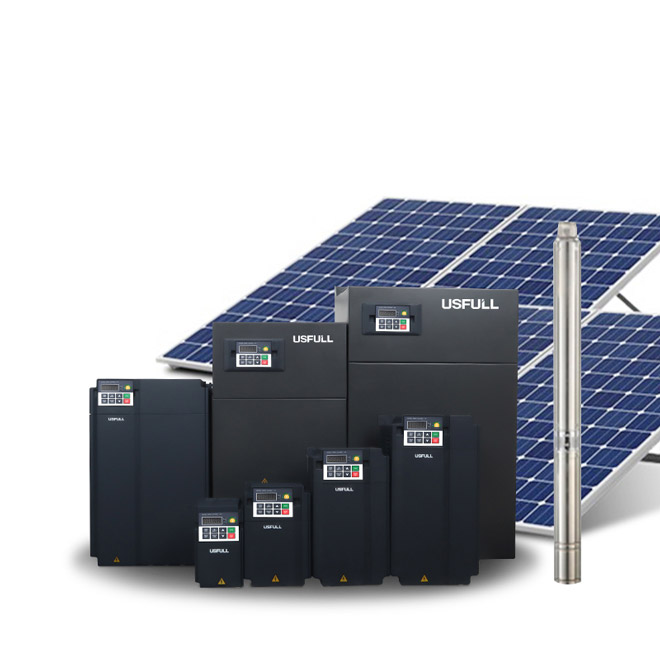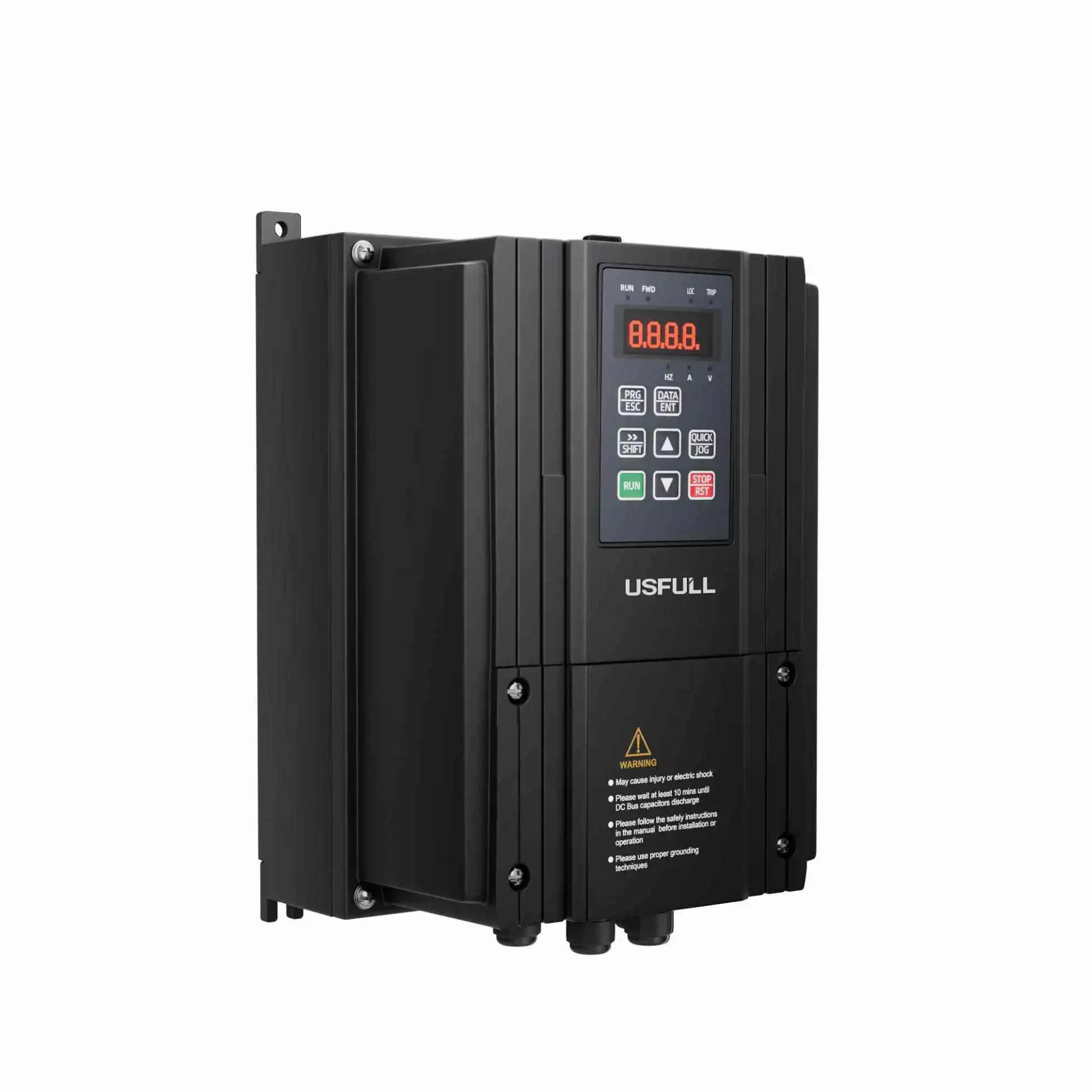What Are DC Circuit Breakers?
A DC circuit breaker is a protective device designed to interrupt and control the flow of direct current (DC) within an electrical system. They serve the same basic purpose as AC circuit breakers but are specifically designed for the unique characteristics of DC circuits.
DC circuit breakers are responsible for protecting electrical circuits and apparatus from overload, short circuits, and other abnormal conditions that can cause damage or danger. When a fault or abnormal condition is detected, a DC circuit breaker opens the circuit, preventing current from flowing and preventing further damage.

How Do DC Circuit Breakers Work?
A DC circuit breaker works by monitoring the current flowing in a circuit and interrupting the current if some abnormal conditions such as overload or short circuit is detected. Here’s a general overview of how DC circuit breakers work:
Current measurement:
A DC circuit breaker has a current sensing mechanism (usually a solenoid or current transformer) that continuously monitors the current flowing through the circuit. A current sensing element generate a proportional signal based on the magnitude of the current.
Trigger unit:
The signal from the current sensing mechanism is fed to the trip unit, a protective device built into the circuit breaker. A trip unit analyzes the current signal and compares it with predefined thresholds or characteristics.
Fault detection:
A trip unit continuously monitors the power signal for abnormal conditions such as overload, short circuits, and ground faults. A trip unit detects a fault condition when the current exceeds a predefined threshold or deviates from its expected
Trip signal:
The trip unit generates a trip signal when a fault condition is detected. This trip signal is sent to the circuit breaker operating mechanism and triggers the opening of the contacts.
Contact opening:
The DC circuit breaker actuation mechanism opens the contacts in response to the trip signal. This action physically interrupts the flow of electricity and disconnects the faulty circuit from the power supply.
Arc extinguishing:
When the contacts move apart, current flow is interrupted and arcing can occur between the contacts. DC circuit breakers use different arc extinguishing methods to quickly extinguish the arc and prevent reignition. These methods may include magnetic discharge coils, exhaust chambers, or other arc extinguishing mechanisms.
Power interruption:
When the arc is extinguished, the circuit breaker holds the contacts in the open position, ensuring that the broken circuit remains isolated. This prevents current flow until the fault is cleared or the circuit breaker is manually reset.
Reset and close:
After the fault has been corrected, the circuit breaker can be manually reset by closing the contacts. Manual or automatic reset mechanisms can be used, depending on the circuit breaker design.
It is important to note that different types of DC circuit breakers may have different operating principles and specific technologies. However, the overall principle is the same, detecting abnormal current conditions and interrupting current flow to protect the circuit and connected devices.
The Advantages of DC Circuit Breaker:
DC circuit breakers have several advantages over AC circuit breakers in certain applications. DC circuit breakers have the following advantages:
1. Improved arc extinguishing:
DC circuit breakers are designed to handle and extinguish DC arcs more effectively. DC arcs are generally more difficult to extinguish than AC arcs because DC systems do not have a zero crossing point. DC circuit breakers have a special arc extinguishing mechanism: B. Magnetic extinguishing coil to quickly extinguish the arc and prevent re-ignition.
2. Low voltage drop:
DC circuit breakers typically have a lower voltage drop across contacts compared to AC circuit breakers. This is beneficial in applications where voltage stability is critical, as it minimizes power loss and allows for more precise control of the DC system and DC circuit breaker connections.
3. Reduced response time:
DC circuit breakers often have a faster response time compared to AC circuit breakers. Because DC systems have no zero-crossing points, faults can be detected and cleared more quickly, providing faster protection against short circuits and other abnormal conditions.
4. Compact size:
DC circuit breakers are more compact and lighter than AC circuit breakers with the same rated current. This is because DC systems generally have smaller dimensions and fewer components to operate.
5. Increased selectivity:
A DC circuit breaker can improve selectivity. In other words, in the event of a fault, only the faulty section of the circuit is isolated, leaving the rest of the circuit unaffected. This selective operation minimizes downtime and interference in connected DC systems.
6. Compatibility with DC power supplies and loads:
DC circuit breakers are specifically designed to handle the characteristics of DC power sources and loads. It can interrupt and control DC current without the limitations of AC circuit breakers optimized for AC current.
7. Security aspects:
DC circuit breakers can provide advanced safety features such as: B. Arc fault detection, ground fault protection, overload protection. These features help ensure the safe operation and protection of DC power systems and their connected devices.
The benefits of DC circuit breakers are most relevant to DC power systems such as renewable energy DC circuit breakers for photovoltaic systems, DC circuit breakers for battery systems, DC circuit breakers for electric vehicles and certain industrial applications. It is important to note that. AC circuit breakers are still the default choice in traditional AC-dominated power.




